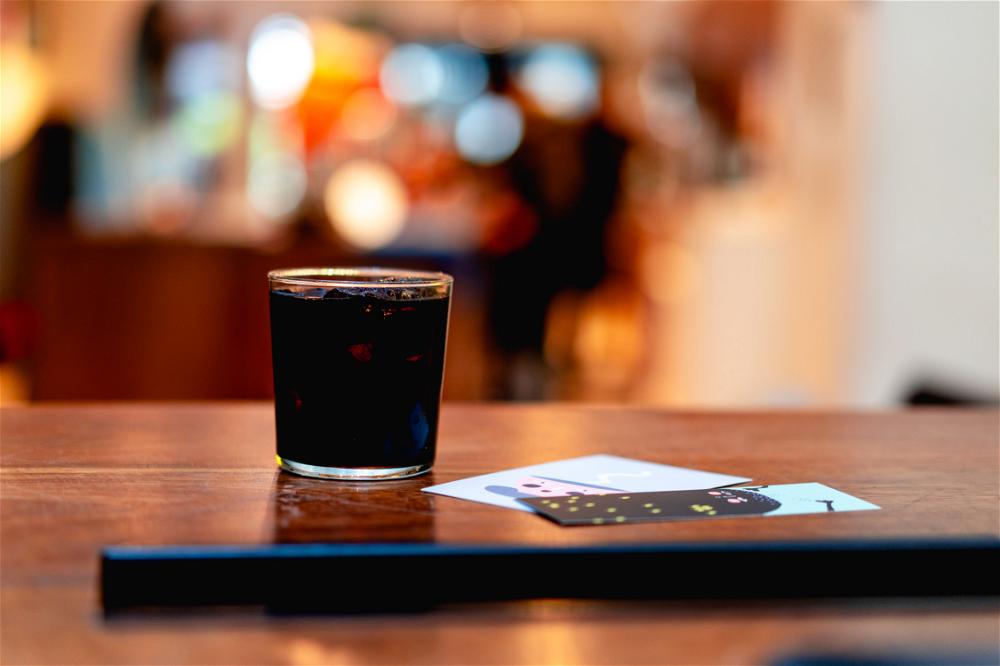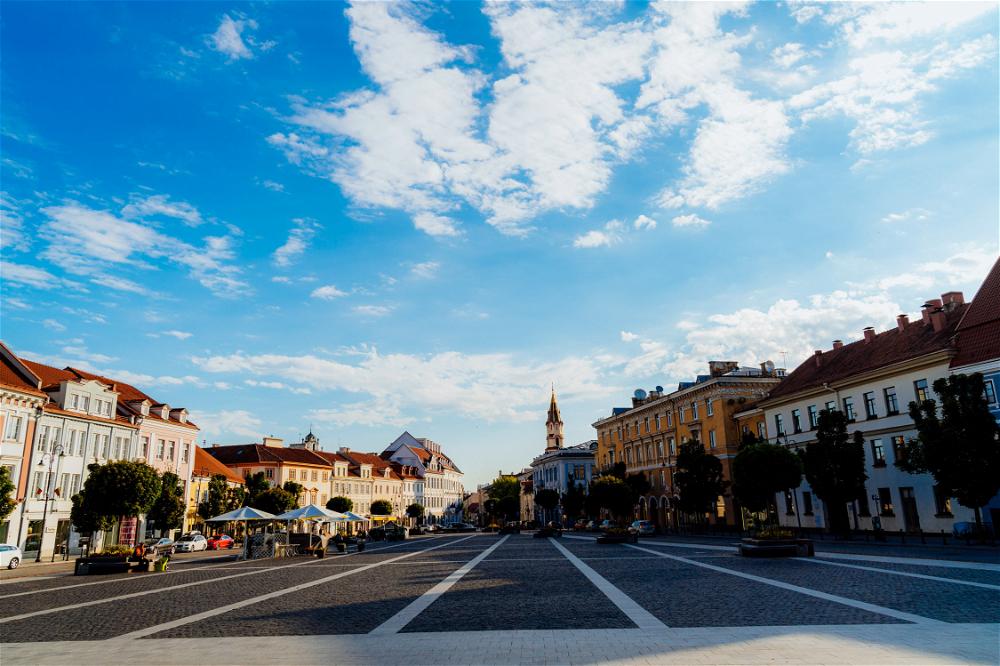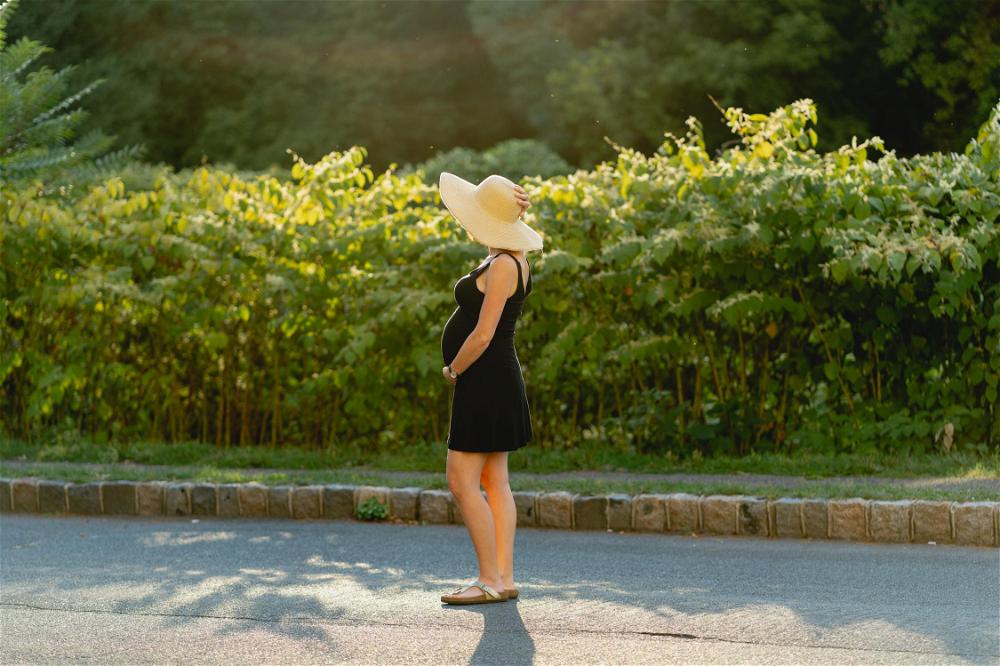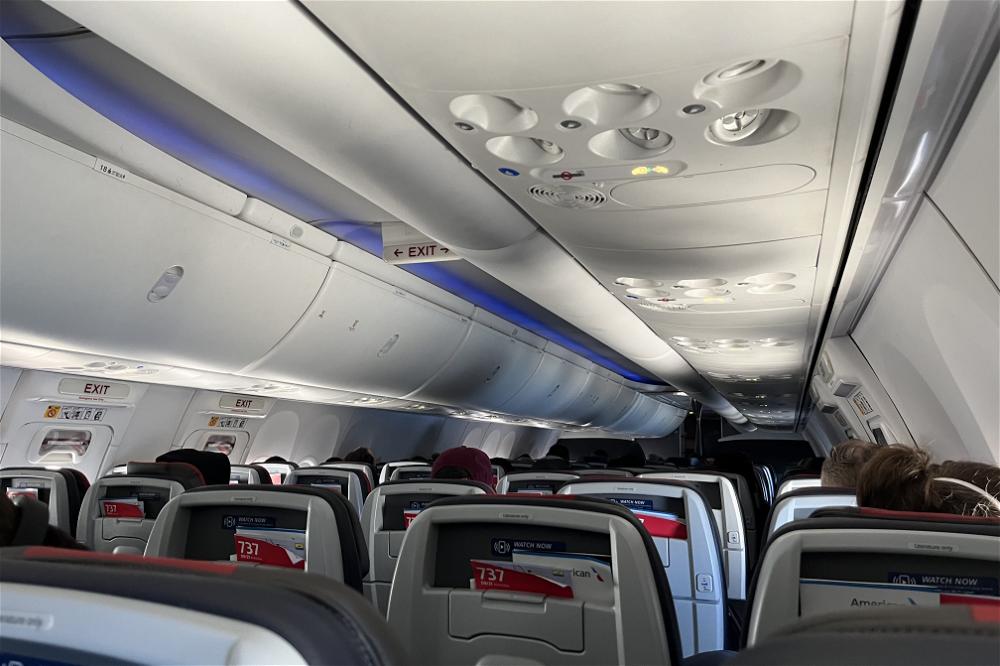15 Best Ways to Eat Healthy during Travel (my Favorite Tricks)
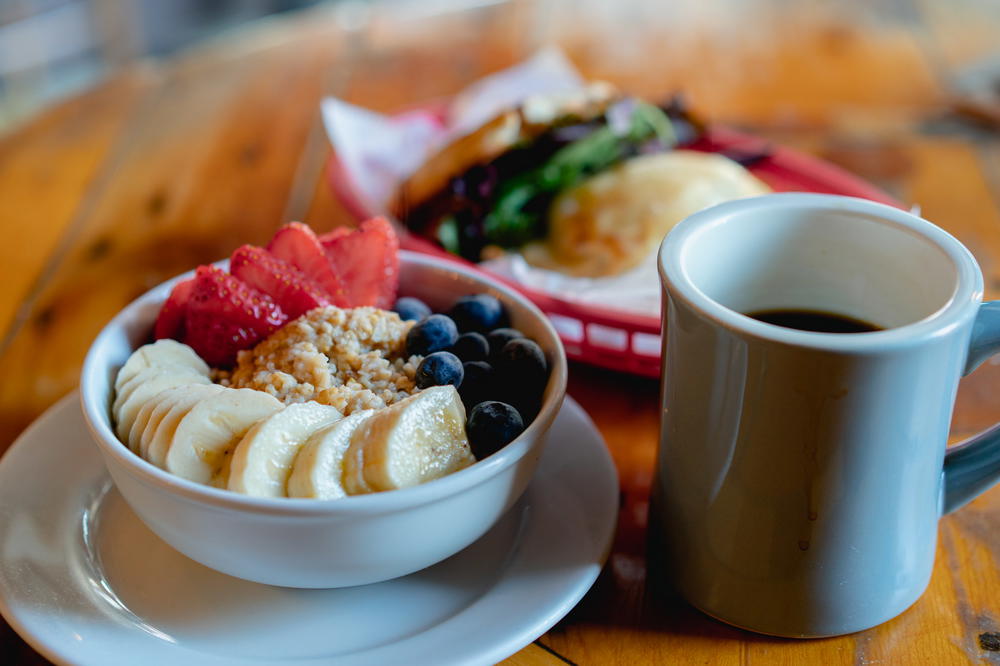
What are some ideas for how to eat healthy during your trip? Check out our best practices and my personal tricks, for healthy eating that you can try during travel.
This article may contain affiliate links. We earn a small commission when you purchase via those links — at no extra cost to you. It's only us (Becca & Dan) working on this website, so we value your support! Read our privacy policy and learn more about us.
How to Eat Healthy When You Travel
- Take control over what you eat
- Limit how often you dine out
- Be mindful of choosing restaurant foods
- Cut out alcohol
- Split up your restaurant portion
- Eat what the locals eat
- For flying, bring healthy snacks
- Choose accommodation with kitchens
- Buy kitchen equipment for more cooking options
- Look up the nearest fresh market or grocery store
- Choose cooking oils and condiments wisely
- Snack on fruits and veggies
- Avoid salty snacks and sugary junk
- Stay hydrated daily during travel
- Configure your habits for short vs. long trips
Traveling and wanting to focus on healthy eating is a challenge for anyone. For me, I go on vacation and I want to indulge a bit. I don’t want to come back feeling like garbage after days or weeks of meals out at restaurants, though!
If you’ve already given healthy eating a shot during a recent trip and it didn’t go how you wanted, I hope my fresh tips can make that better. The following list is a set of suggestions that I take with me whenever I’m traveling domestically or even, internationally.
Let’s begin!
Take control over what you eat
Traveling is one of the times when I get excited about all the street food I see, the restaurants I’ve been recommended by friends and the tasty desserts on the menu at dinner. I know how this works the hard way, though: after a month of eating tacos (and not working out) every day in Mexico, I came home a different size. OOPS!
My tip is to start your trip with the healthy mindset of, “I am in control.” Whether it is making a goal of having one healthy meal per day (as opposed to guilty pleasures), or making sure there are veggies in every dish, I like to focus on feeling in control of my eating.
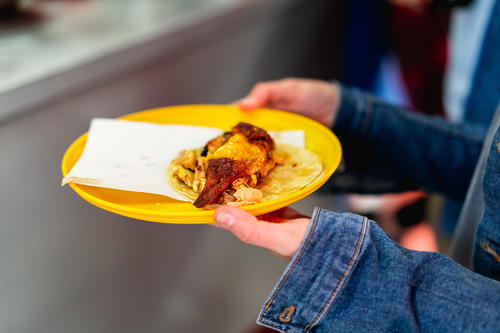
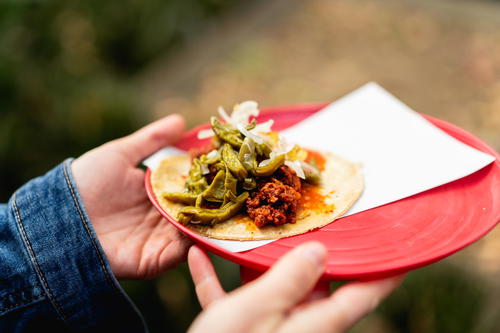
Limit how often you dine out
Dan and I try to limit how often we dine out at restaurants while traveling. This is challenging, especially when meeting up with friends or family, going to a catered event or attending a food festival as a cultural activity.
Try this: If you go out for lunch, try to cook dinner at your Airbnb. Or if you don’t have a kitchen, opt for a healthy grab-and-go lunch and then dine out for dinner.
For us personally, we’re most likely to dine out in vegetarian-friendly destinations, but for places where it’s hard to be vegan or vegetarian, we default to cooking.
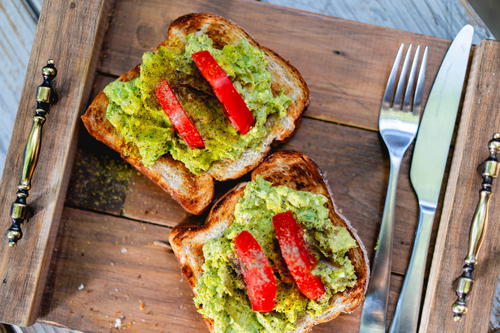

Be mindful of choosing restaurant foods
We also try to be mindful of the types of foods we eat when we dine out. Restaurants are one of my favorite parts of traveling, especially in destinations that have cuisines I have been looking forward to trying.
But as we all know, restaurants make foods taste great by adding excess oil and salt. And while deep-fried food tastes ridiculously amazing, your arteries may complain otherwise! Look for a part of the menu that may be “health-conscious,” or “heart-healthy,” or some version of this.
Of course, such an idea doesn’t exist all around the world, but get creative: the heaping main course entree of fried meat and carbs is likely less healthy than the leafy greens and grilled fish.

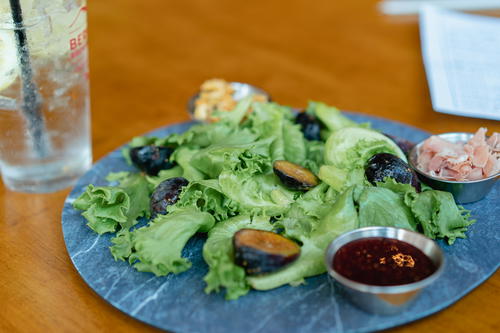
Cut out alcohol
No one wants to hear it, but alcohol is probably the most unhealthy thing you’re drinking during a trip. Of course, we all know that alcohol (save for maybe a glass of wine in moderation) is not the healthiest thing for our bodies, but vacation is a time to let loose!
If you’re looking for a healthy alternative to alcohol, try fruit juice or a club soda. These are two of my go-to’s when I want to order a new drink from a menu, without the added calories (and hangover) of a cocktail.
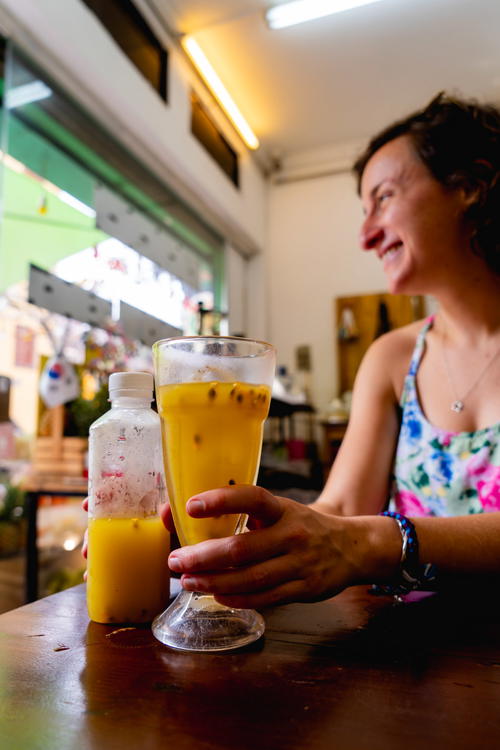
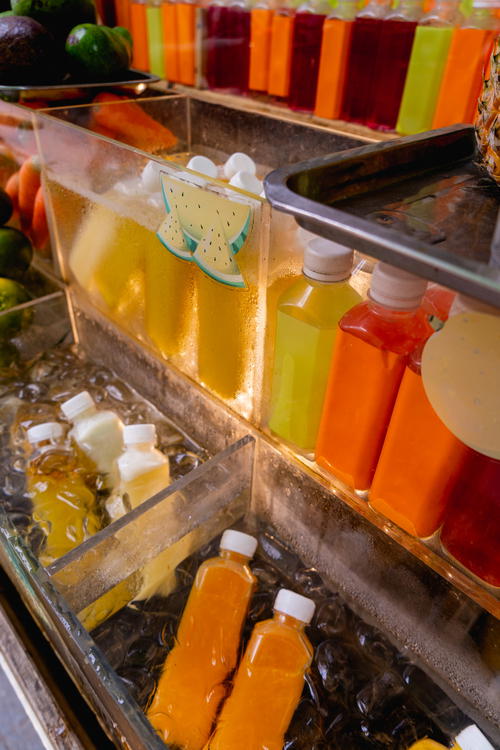
Split up your restaurant portion
When choosing restaurant foods, or even consider splitting a main course with a travel buddy or friend. Restaurant portions are known to be generously huge, and I often sit myself down with the goal of finishing whatever’s in front of me, despite the bad habit that it is.
One way to eat less and still try a variety of foods is to order one appetizer and one main course between you and your friend or partner. This way, you’re both enjoying the app that comes out first, and you’re both splitting the entree, a few minutes later.
Hopefully this helps with avoiding over-eating, and that’s a healthy habit we want.
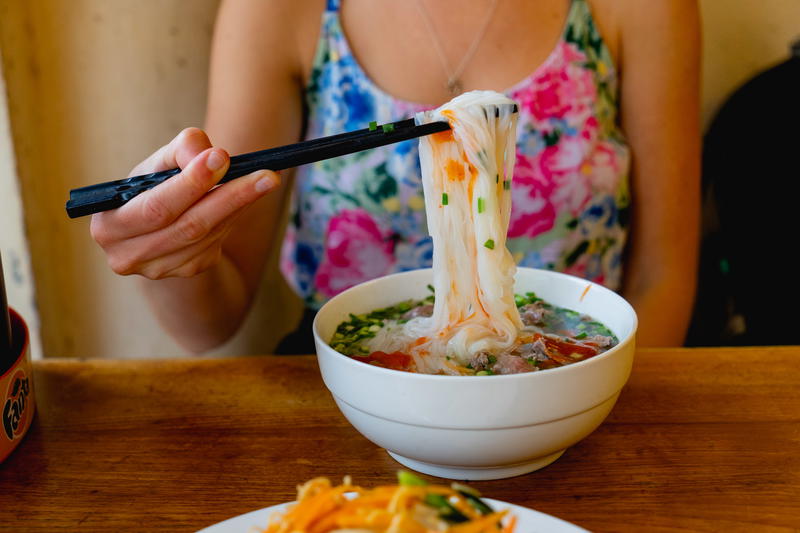
Eat what the locals eat
In so many parts of the world, doing what the locals do is the way to go. When I lived in China, I realized just how different “American Chinese food is” when compared to the “food that people actually eat in China.” American Chinese food is greasy and full of carbs, yet traditional Chinese food has equal parts protein and vegetables, with a side of steamed rice.
It can be really hard to figure this out, especially when you do things like I’ve done them in Vietnam (where I ate pho noodles for lunch and dinner most days) and Mexico, where I could not resist a taco at any time of day.
Going to restaurants and eateries full of locals and seeing what they choose to eat can lead you to a slightly more healthy way of dining out. The portions may be smaller than what is served at restaurants geared toward foreign tourists and the meals are likely more moderate.
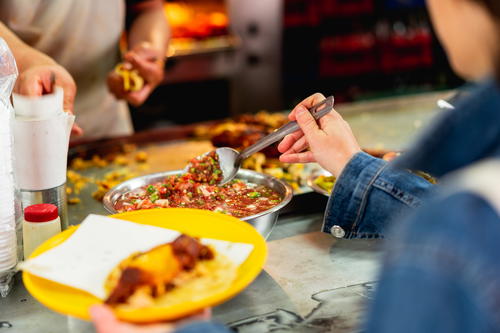
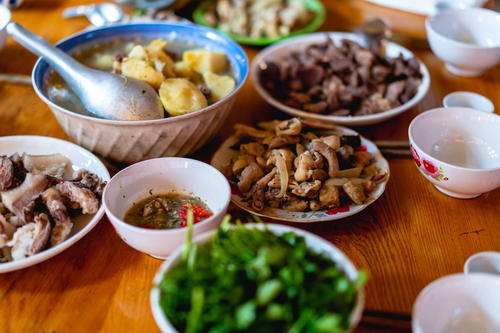
For flying, bring healthy snacks
A tip for flying is to bring healthy snacks for the flight. This is so that you don’t wind up buying airplane food, like on a cheap budget flight where they have a menu of snacks like chips and junk.
Pack some fruits and veggies from a local market in reusable containers (or from home) and you’ll be so glad you did. We like the stainless steel EcoLunchbox food containers for travel, which are leak-proof, eco-friendly, reusable and plastic-free food storage solutions for trips. They’ve done well on flights for us.
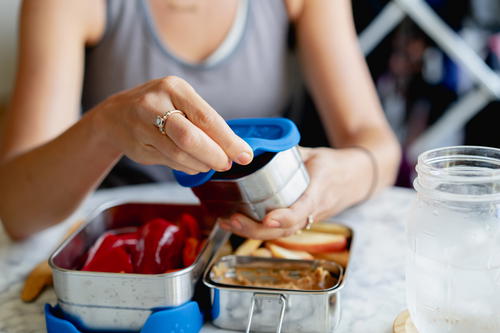
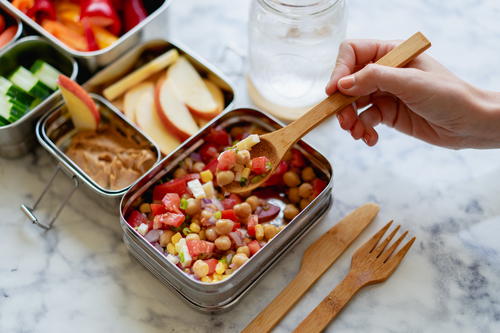
Looking for new proven ways to save money on flights and airfare? The easy solution is to sign up for Going, the leading way to find flight deals and mistake fares, directly to your inbox. Use HALFHALF20 to get 20% off!
Choose accommodation with kitchens
We feel most comfortable when we have a kitchen, so we put this requirement at the top of our list when searching for Airbnb apartments, listings on Booking.com or hostels.
If we have to, we contact an Airbnb host directly to ask about what’s included in the kitchen:
- Is there a burner or stove?
- Is there a rice cooker?
- Are there pots and pans for cooking?
- Are there cooking oils and seasonings, or should we bring some of our own?
We also find having a kitchen one of the most useful things to have at accommodation when you’re traveling with a baby.
Buy kitchen equipment for more cooking options
When you get to your accommodation’s kitchen, take inventory of the supplies and see if there’s anything that you need. For us, in Hanoi, we had to get a cutting board, rice paddle and some spoons in order to cut vegetables and eat meals.
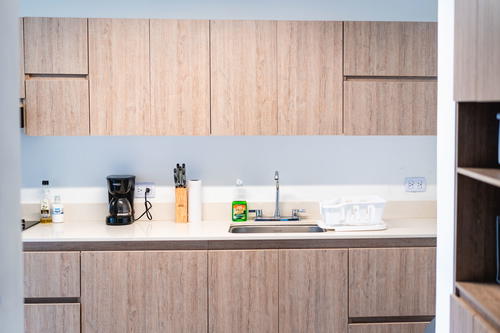

Most of the Airbnbs we’ve stayed in have had good stocks of kitchen items included. Airbnb listings are usually able to confirm this, in the “Kitchen” section of “What this place offers:”
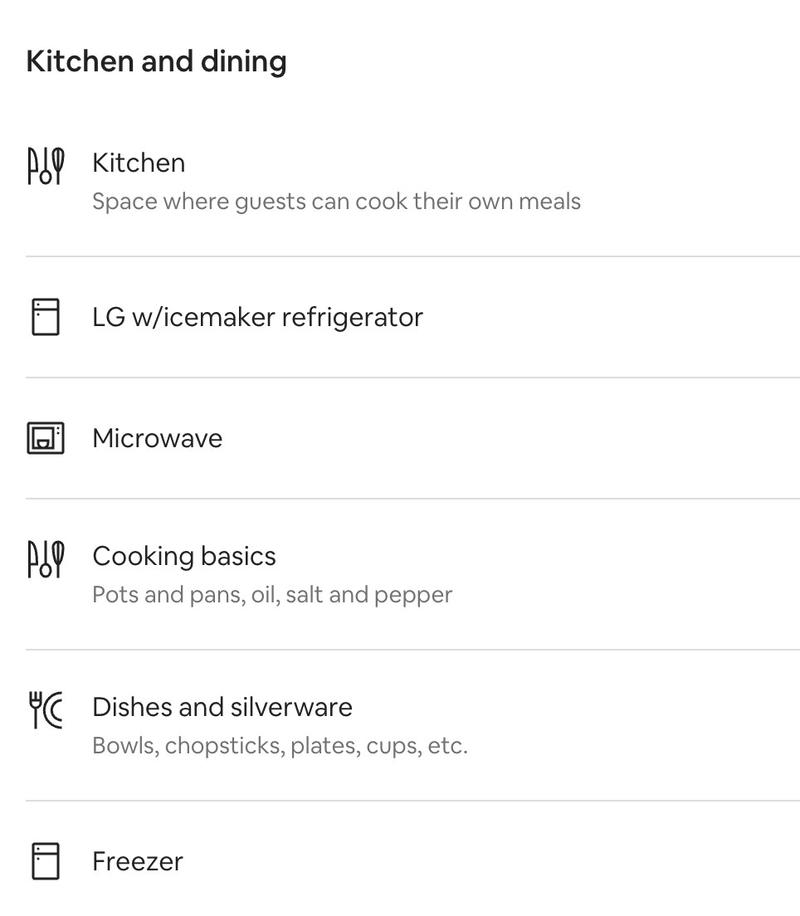
Look up the nearest fresh market or grocery store
In Mexico, it was really hard for me to resist tacos and for Dan to resist torta sandwiches for three meals a day, but we made an effort to go to the local market and pick up fresh vegetables.
While traditional produce markets were easy to find in Mexico City’s downtown, they were not so prevalent in the Condesa area, which was trendier and did not have these types of markets so accessible to us. We, therefore, had to opt for the nearest modern supermarket.
We love markets and grocery stores! It is wonderful to see how people in other countries shop, and we think this is one of the coolest things about world travel.
In Medellin, our neighborhood of El Poblado did not have a produce market, so we would shop at the local grocery store chain called Carulla. We didn’t have any complaints about this, though, as the produce section was gigantic, and we always were able to pick the freshest fruits and vegetables in huge amounts.
In Mexico, we found ourselves next to Mercado San Juan Arcos de Belen, where we came so often that we got to know a mother and son who sold dried fruit, nuts and fresh juice. They started to know us because we came several times per week.
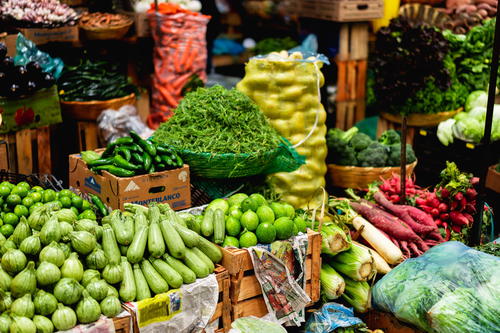
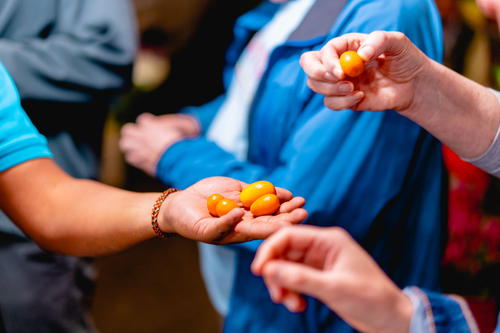
Choose cooking oils and condiments wisely
I think that the benefit of doing your own cooking when you travel, if you’re choosing to be hyper-health-conscious, is that you can buy your own cooking oils. We are two people who opt for olive oil as our healthy oil of choice, and we seek it out for cooking when we travel.
We have found, though, that it’s not popular all over the world! I certainly found this out while living in China, where oils like sesame, peanut or neutral vegetable oils are the most common and olive oil is an expensive imported product.
When we were driving on our Portugal road trip, we bought a small bottle of olive oil and kept it in our backpacks to take from Airbnb kitchen to Airbnb kitchen. In Hanoi, Vietnam, we got the healthiest oil we could find in the grocery store, and used that oil for a month at our apartment rental.
If you are picky about cooking oils or you’re sticking to a diet, you may want to go to specialty food stores if you’re abroad. These are where you’ll find products that mirror the ones you’d find at home, rather than common local favorites.
Overall, just remember that cooking with your choice of oil as well as the amount of oil you like is sure to beat greasy restaurant foods or street foods that may use old or recycled oils.
Snack on fruits and veggies
Fruits and veggies make the best snacks. In my mind, if my “snacking style” is to snack on fruits and vegetables when I’m home, I should do that when I travel, too!
We keep in mind that buying fruit from the street means there may be a layer of pollution or dust on the fruit. For this reason, unless the fruit has a peel, we wait until we get home to wash fruit from the street. I talk about the “Cook it, peel it or forget it” guideline in my list of tips for avoiding getting sick while traveling!
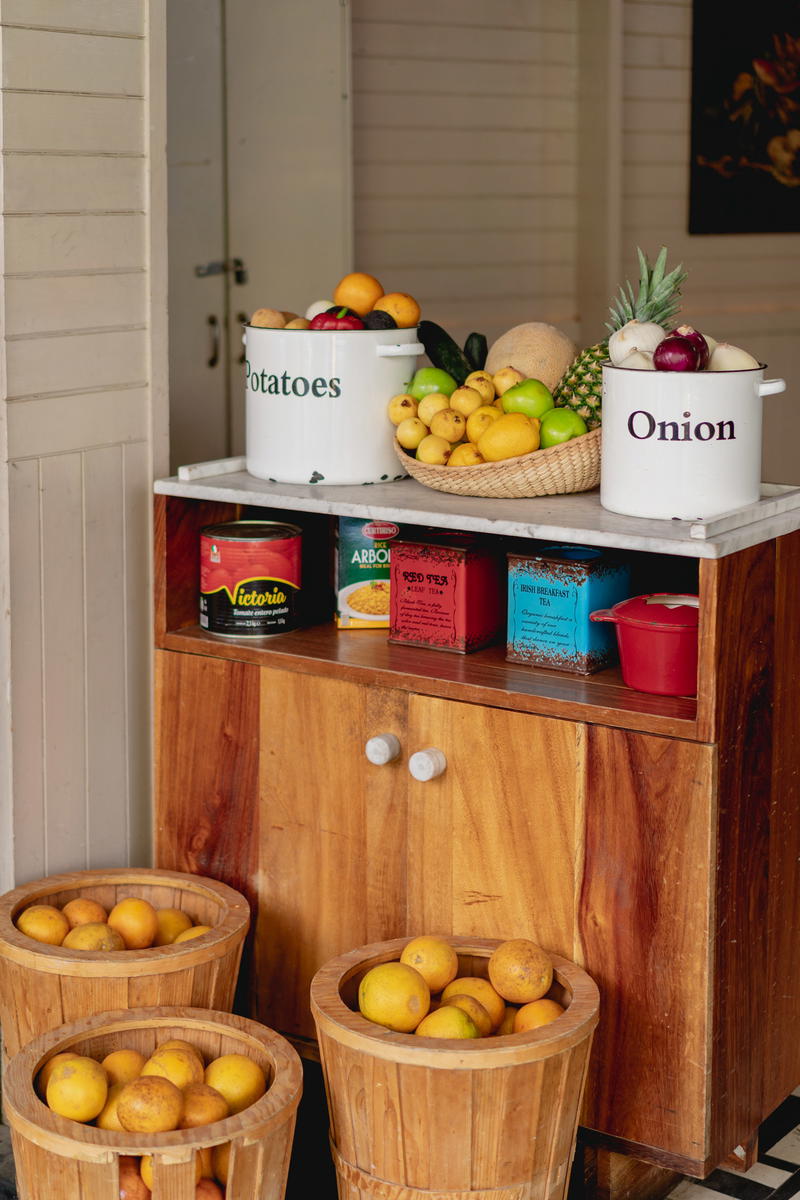
To find fruits and vegetables, we tend to look up if a local farmers market exists, or ask around from locals or hotel staff. Lots of cities, towns and villages have farmers markets, all over the world.
Aside from being able to save money while traveling, we tend to opt for fruit and vegetables as snacks for health reasons. Eating fruits and vegetables feels better and helps digestion. Plus, we can usually find cut-up fruit in a convenience store or grocery store if we can’t find a street vendor selling fruits or vegetables.
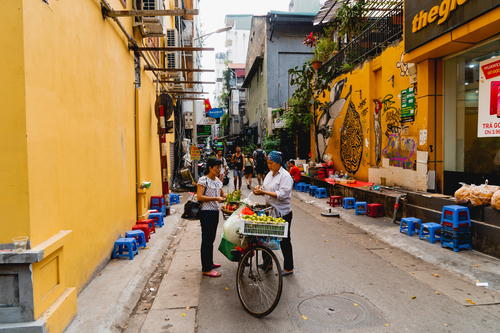
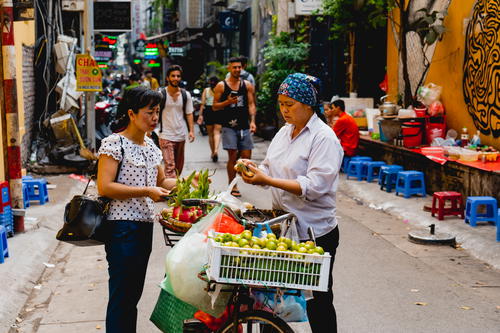
Our favorite fruits from places we’ve been are the mangoes and dragonfruits in Medellin, Colombia, the guavas in Mexico City and the granadillas in Lima, Peru.


Avoid salty snacks and sugary junk
In most places, from New York to Vietnam, you can find vendors who sell chips, cookies, candies and fried food on the street. This seems much more prevalent in warmer places, such as Central American and South America, and Southeast Asia, when compared with Europe.
We admit, these street snacks are good… really good. In Mexico City, I couldn’t help but treat myself to little gummy versions of tamarind and mango (loaded with sugar, but incredibly delicious). I had to stop myself!
If you make a habit of grabbing a few quick snacks throughout the day, you can find yourself in an unhealthy situation. Opt for the local fruits and veggies instead, or try to wait for the next meal.
Stay hydrated daily during travel
Staying hydrated is key to a healthy system. Especially in hot climates, it’s crucial for our bodies to have enough liquids. Hydration is also one of the best tips for getting better sleep on a trip.
This is where drinking enough water and consuming fruits and vegetables that have high water content are great!
If you tend to drink a lot of coffee and tea like we do, staying hydrated is also important to counteract caffeine levels. So, what do we do?
We always carry around water in our water bottles and we fill up whenever possible, in case we won’t see a clean water source for a while. Of course, we like to employ our favorite sustainable travel tips and avoid buying plastic bottles.
Configure your habits for short vs. long trips
It’s easier to stay healthy when traveling long-term versus traveling on shorter trips (especially if you’re a digital nomad). With long-term travel, you figure out how to live your regular life, complete with chores and errands.
When we’re traveling for a weekend, we want to try all the local eats. We might be staying somewhere without a kitchen like a nice hotel, due to proximity or availability.
With long-term travel, we make an effort to find accommodation with a kitchen, so that we can cook. That way, we have much more time to try the local foods, as well as learn to cook them, over several weeks. This is how we’ve stayed healthy during our travels!
✈️ Did our travel tips help?
We share honest, experience-backed advice to help you with smoother trips. If our suggestions saved you time or stress, treating us to a coffee lets us keep researching the next post.
Fuel more travel adviceYou may also like
-
![]()
My 9 Tips to Survive Traveling with Friends (and Stay Friends)
Traveling with friends is way easier than it looks! Here’s my advice to anyone traveling in a group of friends, for what to expect and how to avoid issues.
-
![Feet of man and woman against rocks during sunset hour at cliffs]()
Things to Know Before Planning a Trip as a Couple
Are you going on a trip with someone you just started dating? Here's a guide to our tips for how to survive your first trip or holiday together as a couple.
-
![A glass of black liquid on a wooden table.]()
How to Make Great Coffee While Traveling
Traveling with coffee? You need tips for how to make coffee on the road and on the go. Here’s how to make coffee on a vacation and how to create a coffee travel kit.
-
![A blue sky with white clouds.]()
32 Safest Cities for First-Time Travelers
What are the best safe cities and safe destinations for first-time travelers? If you're traveling on your own for the first time, check out this list of easy safe cities to travel to.
-
![A woman in a black dress and a straw hat is standing on the side of the road.]()
Tips for Planning a Babymoon (What You Should Know)
What is a babymoon, why should you go on one, and when should you take a babymoon? See my babymoon trip tips for for couples taking babymoons before a new baby!
-
![Lufthansa a319 - lufthansa a319 - lufthansa a3.]()
How to Use Travel Hacking to Get Free Flights
Is travel hacking worth it? Let’s see the best ways to get free flights and the websites that will let you travel hack your next trip. Here’s our guide to hacking our travel.


